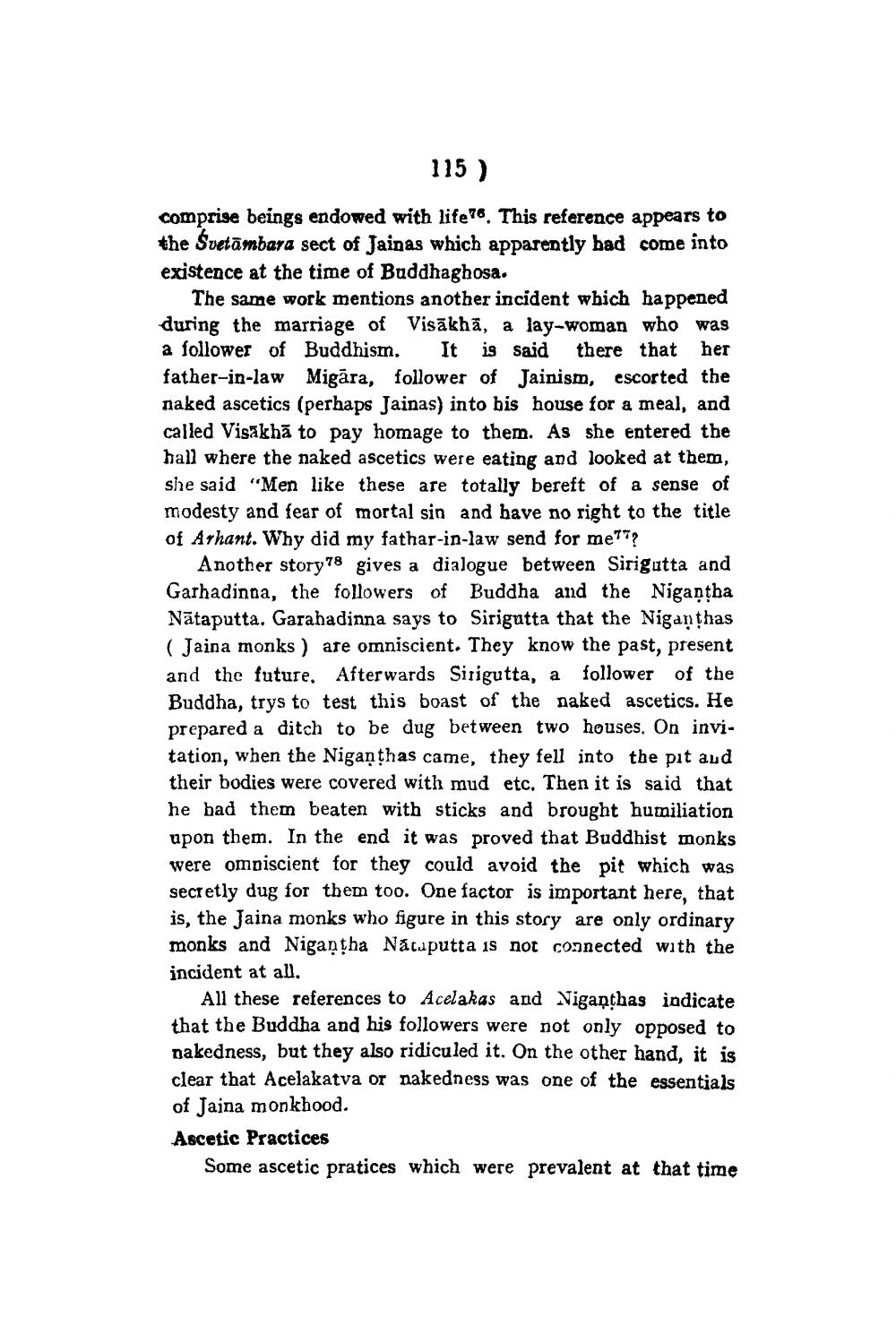________________
115 )
comprise beings endowed with life76. This reference appears to the Svetāmbara sect of Jainas which apparently bad come into existence at the time of Buddhaghosa.
The same work mentions another incident which happened during the marriage of Visākhā, a lay-woman who was a follower of Buddhism. It is said there that her father-in-law Migāra, follower of Jainism, escorted the naked ascetics (perhaps Jainas) into his house for a meal, and called Visakhā to pay homage to them. As she entered the hall where the naked ascetics were eating and looked at them, she said "Men like these are totally bereft of a sense of modesty and fear of mortal sin and have no right to the title of Arhant. Why did my fathar-in-law send for me???
Another story78 gives a dialogue between Sirigutta and Garhadinga, the followers of Buddha and the Nigantha Nātaputta. Garahadinna says to Sirigutta that the Niganthas (Jaina monks) are omniscient. They know the past, present and the future. Afterwards Sirigutta, a follower of the Buddha, trys to test this boast of the naked ascetics. He prepared a ditch to be dug between two houses, On invitation, when the Niganthas came, they fell into the pit aud their bodies were covered with mud etc. Then it is said that he had them beaten with sticks and brought humiliation upon them. In the end it was proved that Buddhist monks were omniscient for they could avoid the pit which was secretly dug for them too. One factor is important here, that is, the Jaina monks who figure in this story are only ordinary monks and Nigaạtha Nataputta is not connected with the incident at all.
All these references to Acelakas and Viganthas indicate that the Buddha and his followers were not only opposed to nakedness, but they also ridiculed it. On the other hand, it is clear that Acelakatva or nakedness was one of the essentials of Jaina monkhood. Ascetic Practices
Some ascetic pratices which were prevalent at that time




